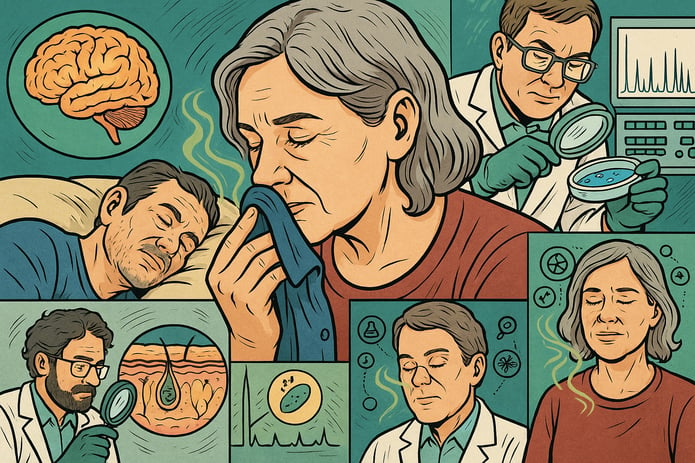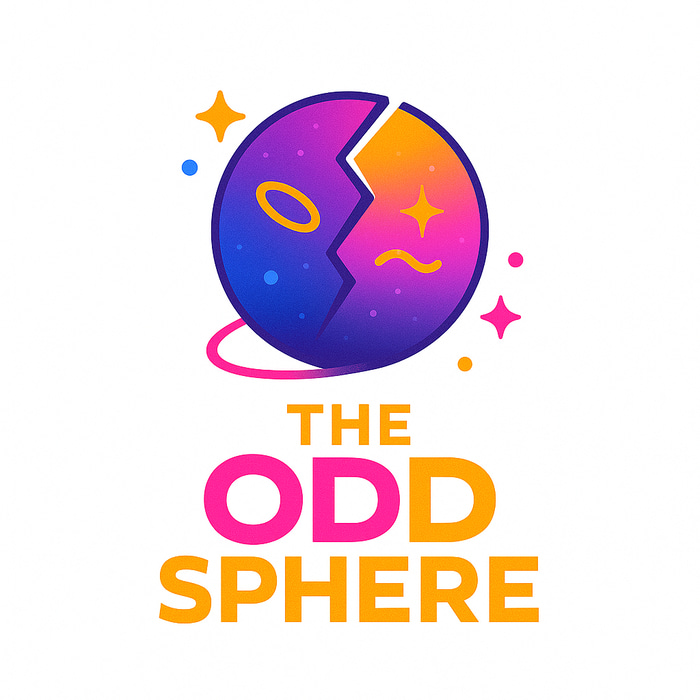The Woman Who Can Smell Parkinson’s Disease
Discover the true story of Joy Milne, the woman who can smell Parkinson’s before diagnosis. Her strange gift is now helping reshape science and early medical detection.
STRANGE SCIENCE
Driver
5/26/20253 min read


🧬 The Woman Who Could Smell Parkinson’s Before It Was Diagnosed
Most of us rely on technology to detect disease: blood tests, imaging, DNA.
But what if a person could sense illness… just by using their nose?
Meet Joy Milne, a woman from Scotland who discovered she could smell Parkinson’s disease — years before doctors could detect it. At first, no one believed her.
Then the science caught up.
Her bizarre ability not only stunned researchers — it helped change how we understand the human sense of smell. And it could lead to entirely new methods of early diagnosis for multiple diseases.
This is the very real, very strange case of a human medical detector — and the science behind her superpower.
👃 The Smell That Changed Everything
Joy Milne isn’t a scientist. She’s a retired nurse. But she noticed something strange early in her marriage: her husband, Les, suddenly smelled different.
It wasn’t body odor. It wasn’t hygiene. It was a musky, slightly sweet scent that only she seemed to detect. At first, she thought she was imagining it.
Twelve years later, Les was diagnosed with Parkinson’s disease.
Joy, reflecting on the timing, realized she had noticed the scent well before any clinical symptoms appeared.
She brought her theory to doctors. Most dismissed her.
Until a researcher at the University of Edinburgh decided to put her to the test.
🧪 The Scientific Smell Test
In 2012, Dr. Tilo Kunath, a Parkinson’s researcher, designed a double-blind experiment:
Six people with Parkinson’s
Six without
All given clean T-shirts to wear overnight
Shirts were anonymized and sent to Joy to sniff
Her task: Identify who had the disease — based on scent alone
The results?
She got 11 out of 12 right.
But here's the twist: she marked one person as positive who was not yet diagnosed.
Eight months later, that person was diagnosed with Parkinson’s.
That’s when scientists stopped laughing.
🔬 The Biology Behind the Bizarre
Researchers began analyzing sebum, the oily substance our skin produces — especially in the upper back and forehead. In Parkinson’s patients, sebum production increases and its chemical composition changes.
Using gas chromatography–mass spectrometry (GC-MS), scientists isolated several compounds that were elevated in Parkinson’s patients:
Hippuric acid
Eicosane
Octadecanal
And a handful of others still under investigation
These compounds emit a distinct scent, one that most people don’t consciously perceive — but Joy’s brain does.
In short, she had hyperosmia, or an unusually strong sense of smell — combined with a brain that could process medical anomalies through scent.
🧠 Why Joy's Brain Is Different
While many people have sensitive noses, Joy’s gift is rare. It’s not just sensitivity — it’s pattern recognition.
Her olfactory system processes volatile organic compounds and somehow categorizes them as symptoms.
This is similar to how trained dogs detect cancer, seizures, or even COVID-19 through scent.
Except Joy wasn’t trained.
Her ability is neurological and intuitive.
🧬 Turning a Human Nose into a Diagnostic Tool
Joy’s contribution has triggered an entire field of biochemical scent diagnostics.
Thanks to her case, scientists are now:
Developing “electronic noses” — machines that mimic human olfaction to detect disease biomarkers
Testing scent-based diagnostics for Alzheimer’s, lung cancer, tuberculosis, and even malaria
Studying the early sebum signature of other neurodegenerative diseases
It’s a real shift in medicine: instead of looking for symptoms, we’re sniffing for them.
And it all started with a nurse who smelled something odd on her husband’s collar.
⚠️ Could You Learn to Smell Disease?
In theory… maybe.
Some researchers believe that “super smellers” might be more common than we think — and that their skills could be trained or enhanced.
There are even scent-detection training programs used in military and medical fields.
But replicating what Joy does is extremely difficult.
Her accuracy, subtlety, and memory for scent patterns is exceptional — and perhaps unique.
🔍 Other Conditions with “Smells” Doctors Are Learning to Recognize
Diabetes: Fruity, acetone-like breath due to ketoacidosis
Liver failure: Musty, sweet odor known as fetor hepaticus
Typhoid fever: Like baked bread
Scurvy: Smell of rotten meat
Phenylketonuria (PKU): Mousey or musty odor
Schizophrenia (in some patients): Sharp, vinegar-like sweat odor
These aren’t myths — they’re medically documented.
What’s strange is that we’ve ignored the diagnostic power of scent for decades.
🧬 Final Thought: The Science of Smell Is Just Beginning
We tend to think of smell as the least important sense. But what if it’s the first alarm our body gives us when something is wrong?
Joy Milne’s strange and astonishing ability didn’t just turn heads — it opened an entirely new way of detecting disease.
She smelled something the world wasn’t ready to hear.
Now science is catching up.
And your nose… might be next.
📚 Sources / References:
Kunath, T. – University of Edinburgh Parkinson’s Research Project
National Geographic – The Woman Who Can Smell Parkinson’s
The Lancet – Volatile Organic Compounds in Parkinson’s Disease Patients
Parkinson’s UK – The Power of Smell in Early Diagnosis
Journal of the Royal Society Interface – Human Volatiles and Olfactory Health Markers
